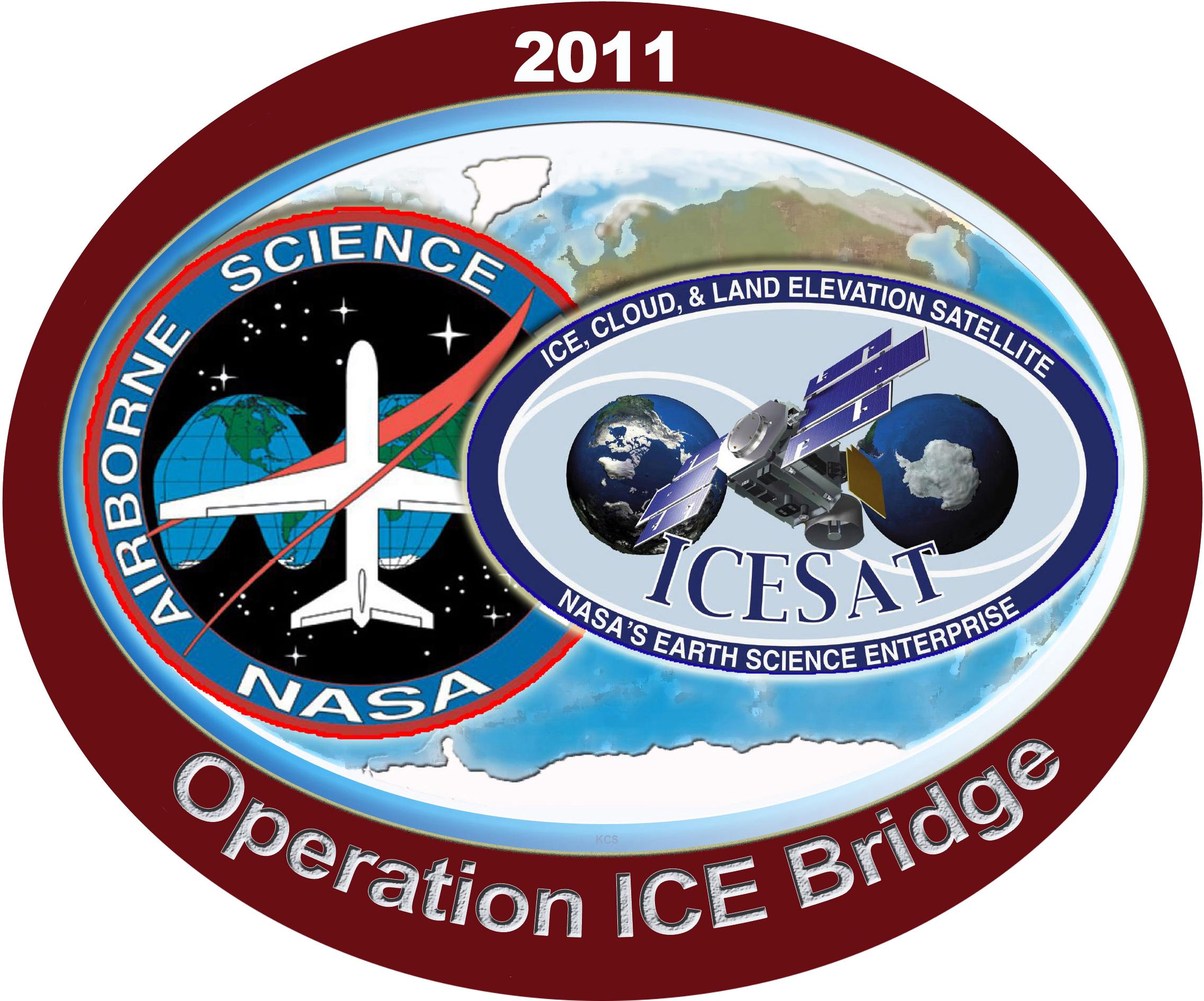Greenland
IceBridge

Icebridge logo (NASA)

Wind blown snow and 70 knot winds made for a bumpy ride on the April 11, 2011 IceBridge flight. Credit: NASA/Michael Studinger
IceBridge, a six-year NASA mission, is the largest airborne survey of
Earth's polar ice ever flown. It will yield an unprecedented
three-dimensional view of Arctic and Antarctic ice sheets, ice shelves
and sea ice. These flights will provide a yearly, multi-instrument look
at the behavior of the rapidly changing features of the Greenland and
Antarctic ice.
Data collected during IceBridge will help
scientists bridge the gap in polar observations between NASA's Ice,
Cloud and Land Elevation Satellite (ICESat) -- in orbit since 2003 --
and ICESat-2, planned for late 2015. ICESat stopped collecting science
data in 2009, making IceBridge critical for ensuring a continuous series
of observations.
IceBridge will use airborne instruments to map
Arctic and Antarctic areas once a year. IceBridge flights were
conducted in March/May 2010, 2011, and 2012 over Greenland and in
October/November 2009-2012 over Antarctica. Other smaller airborne
surveys around the world are also part of the IceBridge campaign.
Learn more about IcebBridge on their website and on Flickr!